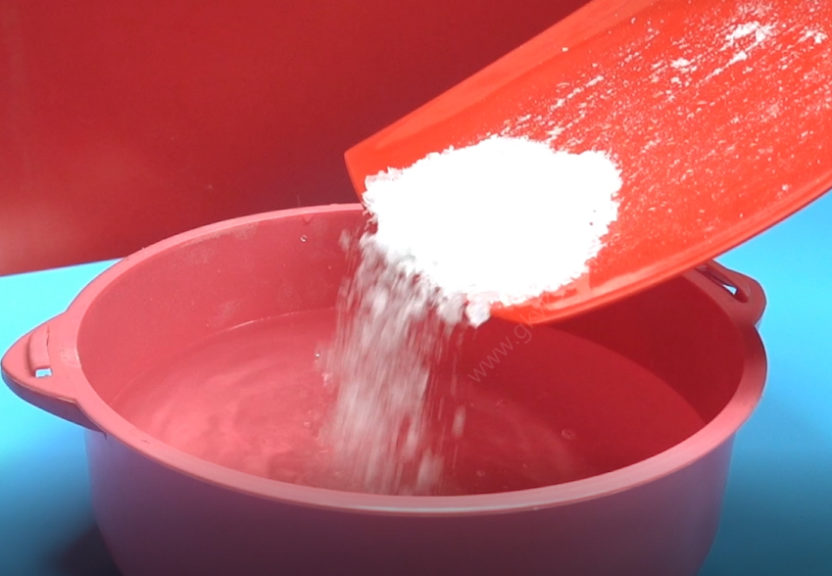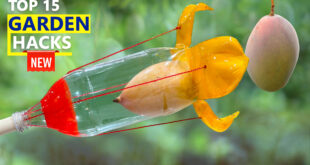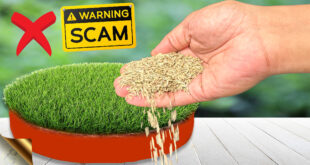In Today’s post, we will look into 5 powerful benefits of using Alum in gardening like how to use it to increase flowering in plants and a simple recipe to make an effective alum pesticide, especially if you do not have the organic neem-oil pesticide.

Alum or Potash Alum is a hydrated double salt available in crystal form or in powdered form or even in liquid form. This can be white alum or red alum, but the compound is the same. It’s chemical name is Potassium Aluminium Sulphate. This compound is eco-friendly and has no hazardous effects on plant, animal, or human ecosystems. It is easily available at any grocery stores or supermarkets and even in some garden stores. This is also available in various shapes like these blocks. These are actually meant to use as an after shave disinfectant.
Food-grade alum is approved by the FDA for household use and also medical use. But how is alum useful in gardening and what are the benefits of Alum in garden or on plants? Let’s list out these five best uses of alum for plants one by one.
5. ALUM PESTICIDE: Alum acts on pests by two modes: one by infiltrating into the body surface of the pest and second by ingestion by the pest. Alum pesticide in 10 to 20% concentration is found to be very effective on many pests including aphids, whiteflies and mealy bugs which are the most common pests in our gardens. It’s also effective in vegetable gardening to kill cabbage worms, cut worms, and other bugs. This pesticide can be used as an alternative to neem oil. Neem oil is not available in many parts of the world.
How to make Alum pesticide?

We will show you the recipe for 1 litre of water in 3 quick and simple steps.
Step 1: Take 100 to 200 grams of alum. For home gardening you can use 100 gms of alum but to kill larger pests like cabbage worms or cutworms, you can take 200 gms.
Crush the larger crystals into smaller ones or use Alum Powder.
Step 2: Take 1 litre of clean water in a spray can or any container and add 100 to 200 gms of alum as discussed, depending on the pest type and intensity.
Step 3: Now add a surfactant like liquid soap or glycerine like about 5 to 10 ml.
You can now load into your spray bottle, Shake it well and spray it on the affected plants. Make sure you do a patch test on a leaf first to test the potency, before spraying on the entire plant.
4. TO REPEL INSECTS: Alum keep slugs and snails away and also certain other insects like cockroaches. Just sprinkle some alum powder or coarse crystalline powder over the affected areas.
3. MOSQUITO CONTROL: It’s an effective larvicide and kills mosquito larvae in stagnant waters in your home and garden. Just sprinkle alum powder over these stagnant waters and you are done.
2. SOIL AMMENDMENT: The first thing you must know is “Alum is NOT a fertilizer”. First and foremost use of alum in garden is to alter the soil PH.
For beginners: Soil PH plays a very important in plant growth and a balanced soil PH is really important for absorption of nutrients by the roots. A pH level of 7.0 is neutral, a pH below 7.0 is acidic, and a pH above 7.0 is alkaline. Also People living in Dry climates often have an alkaline soil, while climates with higher rainfall typically have acidic soil. Generally, most plants do well with soil pH between 6.0 and 6.5 – i.e, a slightly acidic PH. However, there are some plants which love a more acidic soil like hydrangeas, grapes, strawberries, blueberries, and even our rose and hibiscus trees. These are called acid loving plants.
But, before adding alum to soil, you first need to check your soil PH. A simple PH testing tool like this is really useful. You can also purchase a digital soil PH testing tool like this. If you do not have soil PH meter, you can roughly test your soil PH – like whether alkaline or acidic, using baking soda and vinegar hack. You need to add alum only if your soil is alkaline.
If you soil is alkaline or neutral you need to add 1 teaspoon of alum powder per litre of water or 1 tablespoon of alum per gallon of water. Mix it well and then water this to your plant thoroughly and check soil PH after 10 to 15 days. Repeat again if necessary.
1. INCREASE FLOWERING: Sometimes, your plant may not be flowering at all, even with proper sunlight, watering and fertilizing. The fault may lie in improper soil PH. Like acid loving plants including rose and hibiscus need a soil PH of 5.5 to 6.0 for proper absorption of nutrients. In such cases, you need to alter the soil PH as discussed in point number 4. This will certainly boost flowering in these plants.
 GKVKs – Gardening Tips and Store Gardening Tips and Store
GKVKs – Gardening Tips and Store Gardening Tips and Store



